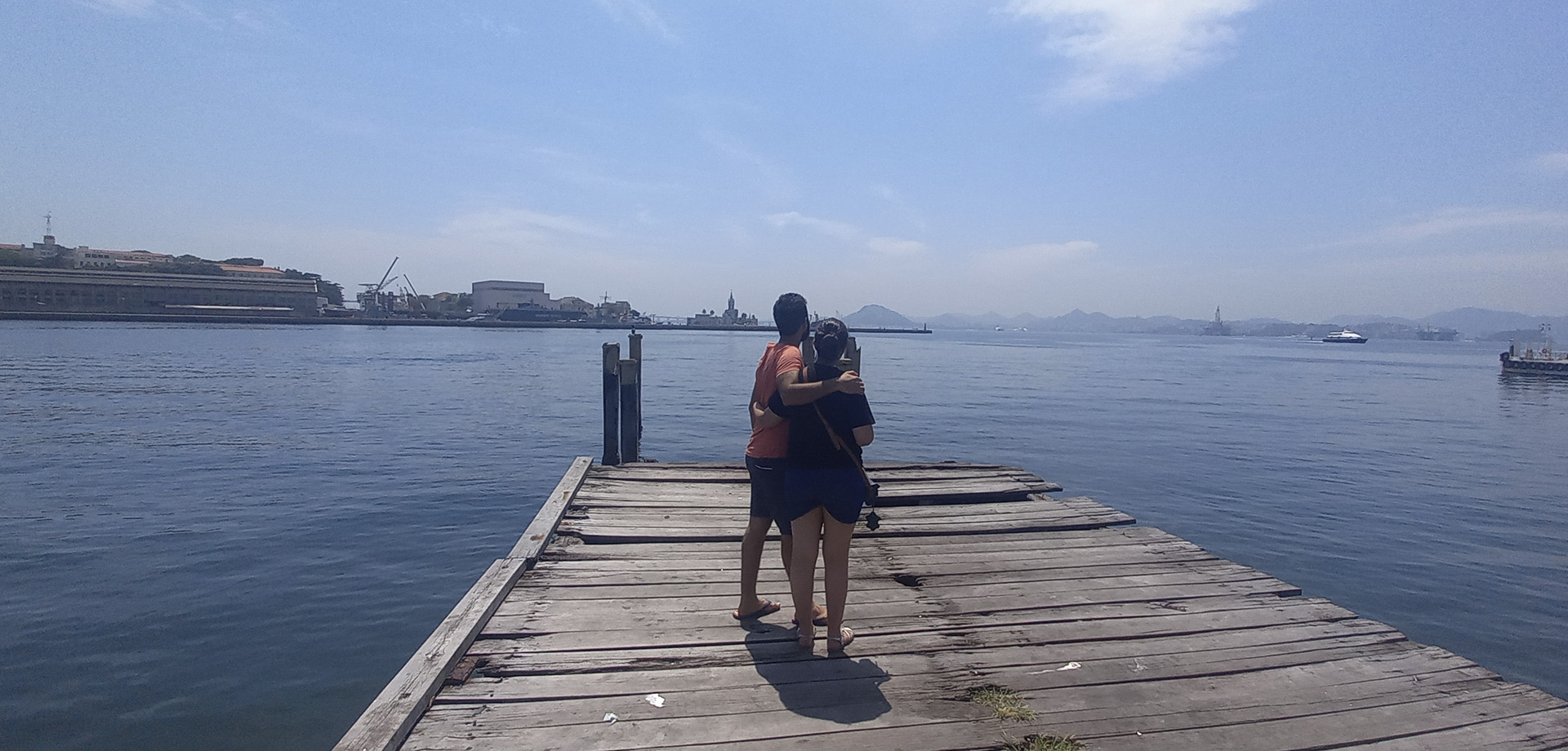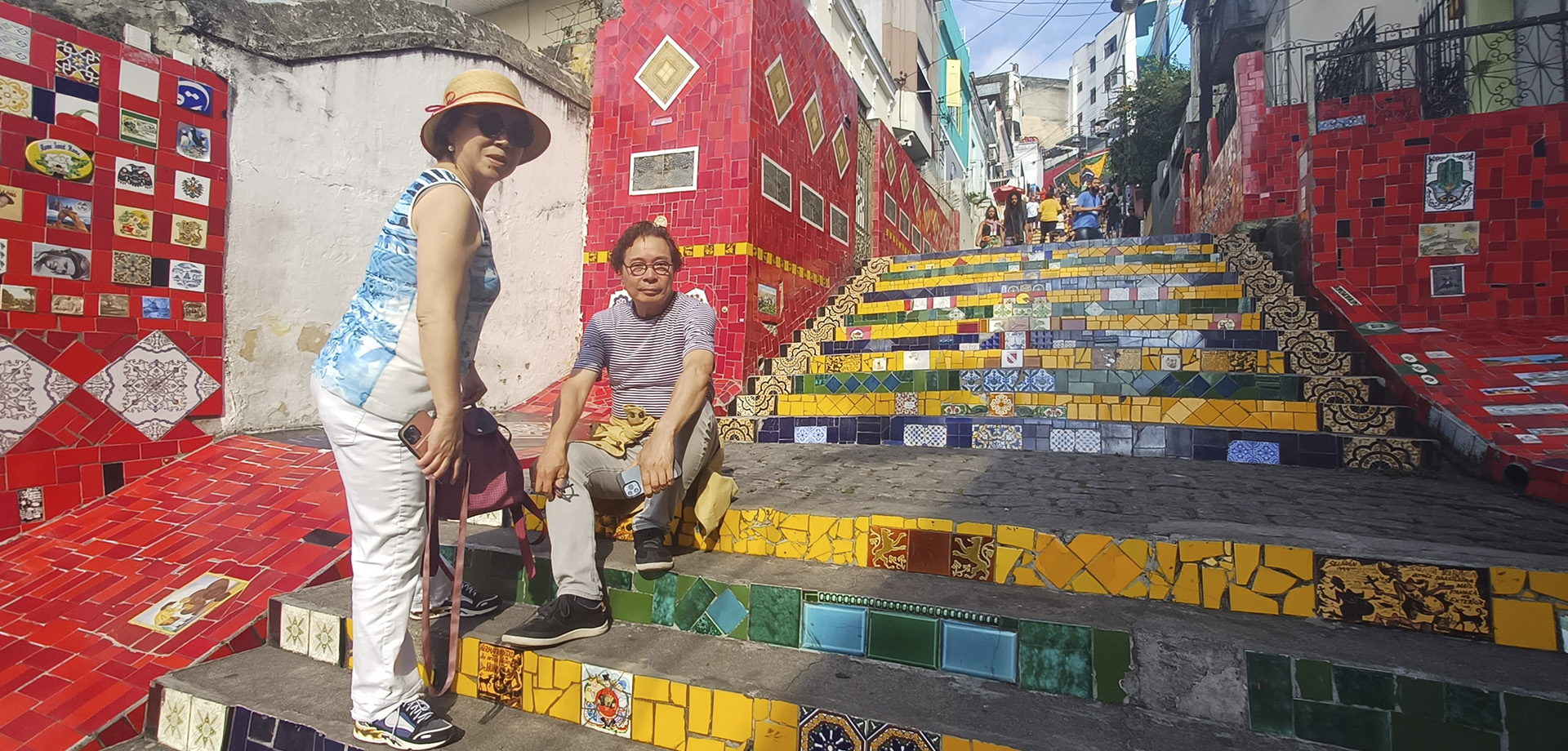














Explore the historic heart of Rio de Janeiro: A cultural journey through its iconic landmarks. Rio de Janeiro is much more than just a beach destination. Its historic center is filled with architectural and cultural treasures that testify to its rich past. Among the most captivating tours I offer is the walking exploration of the historic center, which takes you on a journey through time, revealing the soul and history of this fascinating city. In just two hours, you will discover must-see sites, from the majestic Cinelandia Square to the iconic Candelária Church, passing through landmarks such as the Arches of Lapa and the Selarón Staircase.

Our tour begins at Cinelandia Square, a cultural and political hub in Rio. This emblematic spot is surrounded by magnificent historical buildings, with one of the most impressive being the Municipal Theatre. Inspired by the Opéra Garnier in Paris, this stunning building is a masterpiece of eclectic architecture, adorned with gilded elements, Corinthian columns, and sumptuous stained glass windows. Its imposing façade sets the tone for the tour: a blend of European elegance and Brazilian history.
Starting from this square, you’ll begin to feel the unique atmosphere that permeates the historic center of Rio. It’s here where the grandeur of the city meets its daily vibrancy, where modernity intertwines with the past.

As we continue the walk, we head toward another iconic monument of Rio: the Arches of Lapa. This aqueduct, built in the 18th century to transport water from the Carioca River, is now one of the city’s most recognizable symbols. This massive stone structure, consisting of 42 arches, is also the heart of the nightlife in the Lapa neighborhood, but above all, it bears witness to the city's colonial history.
Walking under these monumental arches, you can almost feel the weight of the centuries of history they have witnessed, while being surrounded by the vibrant energy of Rio, always in motion.

Just nearby, we discover one of Rio’s most artistic and colorful sites: the Selarón Staircase. This unique staircase, made up of over 2,000 ceramic tiles from around the world, is the work of the famous Chilean artist Jorge Selarón. Every step is a true explosion of color, an invitation to marvel and reflect.
Selarón dedicated his life to beautifying these steps, constantly evolving them by decorating them with tiles gifted by visitors from across the globe. The staircase has become a true symbol of cultural unity, where each step tells a different story. It’s a must-see for anyone wanting to understand Rio's creative and welcoming spirit.

The next stop on our tour takes us to Saint Sebastian Cathedral, a monumental building with a strikingly modern design. With its conical shape and towering stained-glass windows, the cathedral stands out amid the classical landscape of the historic center. Designed to resemble Mayan pyramids, it honors Saint Sebastian, the city's patron saint.
The vast, impressive interior is bathed in colorful light from the four stained-glass windows that rise more than 60 meters. It’s both a spiritual and architectural marvel, offering a sharp contrast to the historical buildings surrounding it.

After this dive into modern architecture, it’s time for a break at one of the oldest and most prestigious cafés in Rio: Confeitaria Colombo. Founded in 1894, this historic pastry shop is a true carioca institution. Stepping through its doors, you’ll be transported back to the Belle Époque, with its Belgian mirrors, jacaranda woodwork, and sumptuous chandeliers.
In this refined setting, we’ll pause to enjoy a coffee or a traditional Brazilian pastry. Confeitaria Colombo is more than just a café—it’s a deep dive into Rio’s history, a place where the elite once gathered, and where today you can taste a piece of that history.

Our tour continues toward Praça XV de Novembro (November 15th Square), a central place in Brazil's colonial and imperial history. Once a market square, it witnessed many significant events, including the proclamation of the Republic in 1889. Surrounded by historic buildings, the square is home to the Imperial Palace, the residence of the Portuguese royal family after their arrival in Brazil in 1808.
This history-laden site stands as a living testament to the time when Rio de Janeiro was the capital of the Portuguese Empire. Here, you’ll feel the political and symbolic importance of this place for both the city and the country.

Finally, we conclude our journey at Candelária Church, one of the largest and most beautiful churches in Rio de Janeiro. Its impressive architecture, blending Baroque and Neoclassical styles, reflects the European influence on Brazil’s religious buildings. Built in the 17th century and completed in the 19th, this church is an iconic place of worship where you can admire stunning stained-glass windows, intricate frescoes, and a majestic dome that towers over the city.
It’s here, at this majestic church, that our tour of Rio’s historic center comes to an end, after two hours of fascinating discoveries that have immersed you in the city’s history, art, and culture.
This walking tour of Rio de Janeiro’s historic center is more than just a simple sightseeing trip. It’s an immersion into the very essence of the city, where every street and monument tells a story of its rich and complex past. In just two hours, you will have explored some of the most iconic sites in Rio while also discovering lesser-known and authentic aspects of its heritage.
I invite you to join me for this unique adventure, where history, culture, and architecture meet in an exceptional setting. An ideal tour for history buffs, art enthusiasts, and curious explorers looking to fully immerse themselves in the heart of Rio de Janeiro.